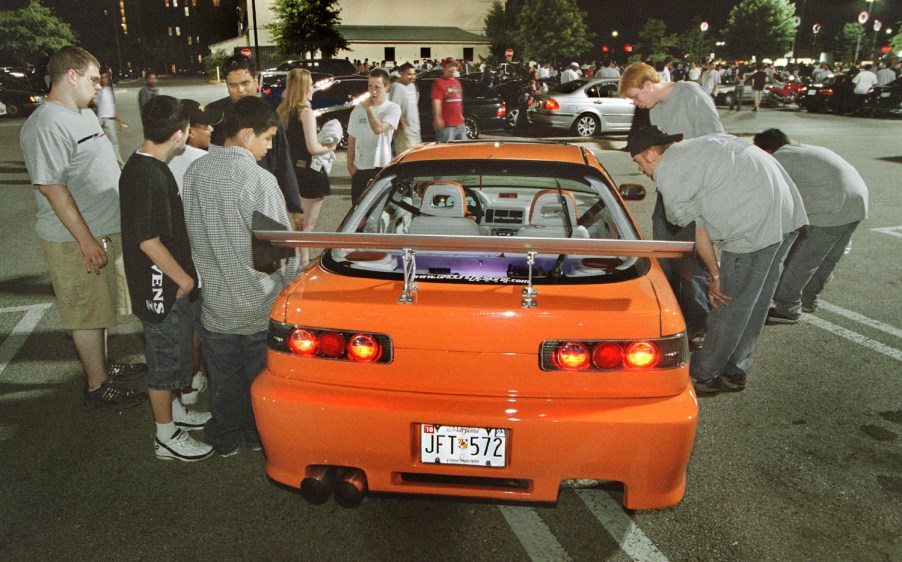
Make Your Acura Integra Handle Like a Rear-Wheel-Drive Car
The Acura Integra from the mid-’90s was a near-perfect sports car. It was small, nimble, lightweight, and had decent power for what it was. It had its faults as well. Though the steering was responsive, the stock suspension on the base model allowed substantial body roll and felt a bit boaty for how small the car was.
While carrying ample speed into a turn, you can feel the weight of the car shift dramatically, almost tipping it over. The good news is this is fixable. It’s possible to equip a base Acura Integra from the mid-’90s with upgraded suspension and help it to handle as close to a rear-wheel-drive car as possible, that is, if you weren’t lucky enough to get an Integra Type R.
Acura Integras benefit from tires and sway bars

A rear sway bar and some decent tires are the best bang for your buck to make your Acura Integra handle better. Sway bars are metal rods that connect opposing wheels on either end of a car. When the vehicle wants to lean toward the outside of a turn, the sway bar will twist and force the inside wheel’s suspension to compress. This keeps the car as flat as possible through the turn. It’s better for your tires, which means it’s better for traction and can help push that rear-wheel-drive feeling.
Since Acura Integras of this vintage don’t have much power, they don’t need wide tires like on a V8. However, picking a good sticky compound can make all the difference. The Pilot Super Sport from Michelin is the tire to beat right now and sadly isn’t available in the Integra’s size. The only ultra-performance tire available in the Integra’s original size is the Falken Azenis RT615k+, according to Tirerack, which is a highly rated tire. If possible, spring for aluminum wheels. They save weight and offer less resistance.
Bushings, bushings, bushings
If you have the sway bar and the Falkens yet still lack the response you need, find a good set of polyurethane bushings. They usually cost a couple of hundred dollars for a complete set. OEM rubber bushings degrade over time and start to sag, while polyurethane is a stiffer compound and will provide a sharper response from the suspension. It’s a relatively cheap modification and can make a world of difference. However, it won’t be the most comfortable ride.
Your Acura Integra may need coilovers

Integras are low enough without going for a set of lowering springs, but a set of coilovers might be the next best step. They can get expensive, but depending on the kit, you’ll be able to set up your suspension the way you want it, including rebound and compression. It’s probably not worth the money for a daily driver; however, if you’re going to track it, then slap a set of coilovers on.
The Integra’s factory handling is comfortable and capable on city streets. However, for canyon carving or just a little more fun behind the wheel, these minor upgrades can make a big difference. If you want to daily drive and autocross, stick to the tires, sway bar, and bushings. The car will handle like it’s on rails.


